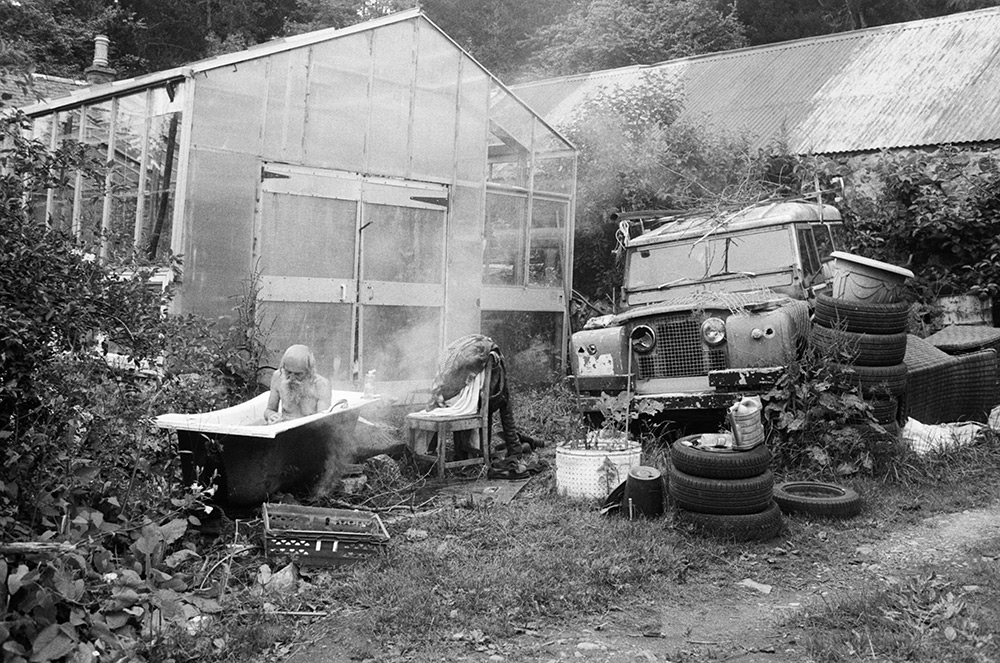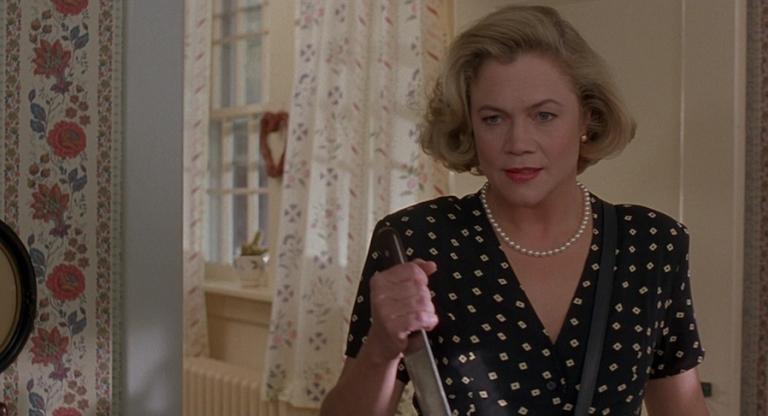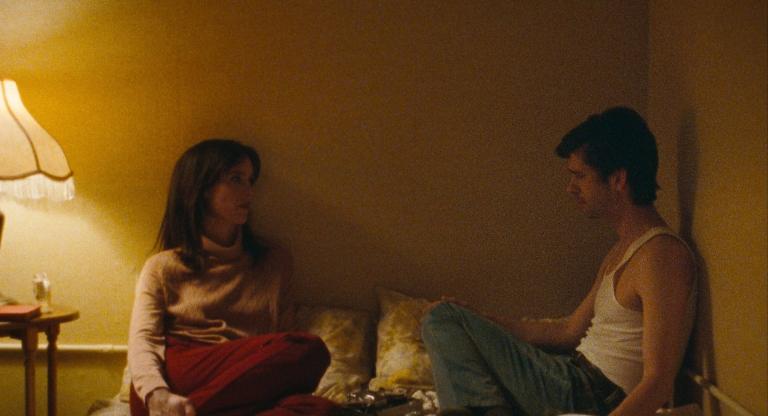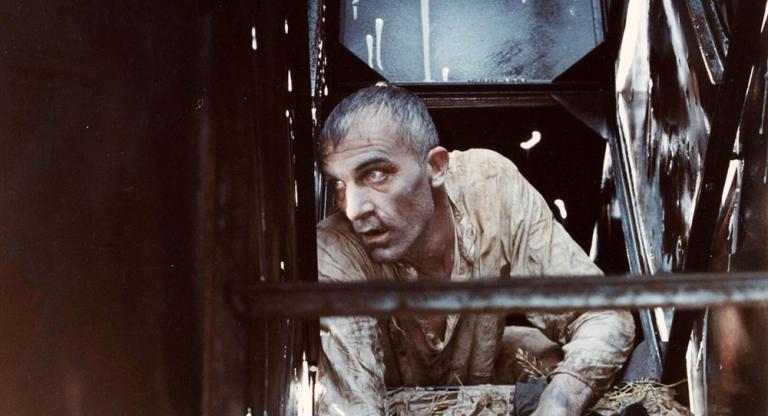At the end of 2011 I was writing about films released that year, and Ben Rivers’s Two Years at Sea stood out. The prognosis for celluloid seemed rather bleak, and yet here, I offered, were these exquisite, hand-processed images, which heaved and sighed with aesthetic potential even as their parent material entered its twilight. The film’s subject, Jake Williams, who lives on a hermitage in rural Scotland, is an unlikely movie star, but his time with Rivers has resulted in one of the most fruitful collaborations in 21st century cinema.
More recently, Rivers returned to Scotland to shoot another feature, Bogancloch (2024, pictured above), which will begin its run at Anthology Film Archives this week alongside other works the pair have made together. Also this week, the filmmaker’s latest, Mare’s Nest (2025), will have its premiere at the New York Film Festival.
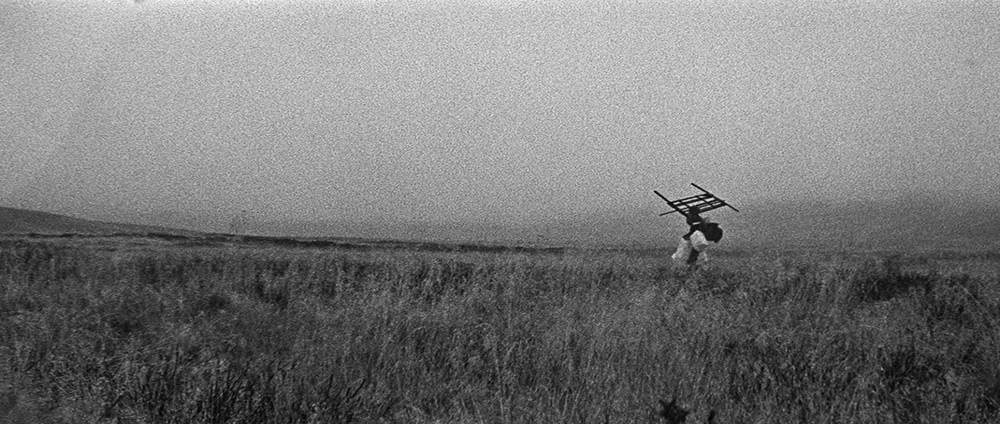
Thomas Beard: To begin simply, who is Jake Williams and how did you first come to know him?
Ben Rivers: I first met Jake 20 years ago, because I was quite into the idea of finding people who lived really off-grid, partly because I'd been reading a lot of books around it. People always think I mean Walden, but actually I hadn't read Walden. I was reading this Norwegian guy, Knut Hamson, who wrote a great book called Pan, so I wanted to try and find someone a bit like that.
It was just through luck, really, through friends, asking around, that I heard about Jake. I went to visit him with a few rolls of film and made this short film called This Is My Land. It was an early film for me, and we got along really well. It sort of helped me define what kind of filmmaker I wanted to be at the time. He was a big part of that. And then, about four or five years later, I got the opportunity to make a longer film, you know, a bit more money, and I decided to go back to him, because I felt like there was still lots to do. There was more to discover.
The first short film was very fragmentary, very quick shots, didn't really consider his relationship to time. I wanted to go back and spend more time with him and consider this different relationship to time. So then I made my first feature-length film, which is called Two Years at Sea. At that point, we were both really happy. The film did surprisingly well; people responded well to it. And we just stayed friends. I would go up and visit, and occasionally we would make little films, almost for fun.
TB: He also seems like a great friend to have in the event of total social collapse. You could pop in.
BR: [Laughs] I've got a special bag packed, just ready to go up any day now.
TB: Speaking of this relationship to time, what, to you, are the key distinctions between Two Years at Sea and Bogancloch? These are sort of like your Michael Apted movies or something, except that in the Up films, obviously, the lives of everyone change so much from film to film, and that's their great drama. But here there's something else at play.
BR: It's sort of like the opposite of that, more about extremely subtle changes, because his life hasn't changed that much in the last, well, 12 years between the two features. That was interesting to me. The world has changed quite a lot. Globally, geopolitically, there's been all kinds of stuff going on. I was thinking about making it, and then Covid happened; I couldn't go and start making the film. One of the main differences, I think, between the two films is that [in Bogancloch] there's the introduction of other people, other humans, into his world. And that's partly me wanting to do that, but also him.
When we first did Two Years at Sea he was living a more solitary life, and I think one of the things about making that film was that he really enjoyed it. He enjoyed coming to do Q&As and stuff. I found that interesting, to see him in the outside world. Also, in Two Years at Sea, we put this caravan up in a tree, and he then put that on Airbnb, so people can go and stay there, up in the tree, which is kind of amazing. It's really cheap, like maybe 20 pounds a night.
TB: Wait, is that still going?
BR: Still going, and it's very sturdy. The tree has embraced the caravan, kind of grown around it, and people really like it. But what that's also done is it's brought in more visitors, and he's really enjoyed that, I think. He's enjoyed the social engagement that thing has brought. That made me want to include other people in the film. So it's not just him alone, it's him in relation, a little bit, to other people. We’ve got the kids that he's teaching about the celestial bodies, and then these people who come, walkers, and they sing this song about life and death, because, of course, as we get older, we're also thinking about mortality.
TB: Speaking of celestial bodies, I feel like scale provides an animating tension in your work; it's quite macro and micro at once. Your camera will frequently alight upon, then linger on some extraordinary detail, an object that might otherwise elude notice, and at the same time yours is a cinema that zooms out, like the geologist in I Know Where I’m Going, who speculates about what traces of humanity might be left 100 million years from now.
Scale also has a more direct effect in your work in terms of the aspect ratio. A formal quality that's really striking in Bogancloch is the wide-screen format. We don't typically associate the lone filmmaker, Bolex cradled in their hands, with Scope. So I'm curious, how does this scale affect the way you shoot?
BR: This is something that I sort of pain over before any film: what aspect ratio to shoot in? It really does change the whole way you think about a film. The way that I frame, the way that I shoot, is affected by that initial decision. With Bogancloch it felt quite clear to me that this is a way of kind of moving away from being this more traditional, intimate portrait.
With This Is My Land, I was quite young and, you know, starting out, trying to understand things. That film is more of a documentary, in a sense. It's more observational. And that 4:3 aspect ratio fits into that tradition of observational cinema. But then, with the subsequent films with Jake, I wanted to move beyond that and think about scale; in fact, time and space, and not just everyday, quotidian time and space, but something that moves between that and something bigger, something beyond our everyday relationships with people and place.
It’s brought more to the fore in Bogancloch with, you know, talk of the celestial bodies and the ending, going off into space, seeing his life as one little dot in the universe. At the same time, using sound you can do these things—like where we're leaving him, we're floating away from him into space, but the sound is still very much on the floor with him in the bath, heated by the fire, and the cat is there. That’s really important to me, that it's also still somehow grounded.
TB: Watching these films definitely gives you a perspective that is beyond the physical and temporal scale of humanity.
BR: Of daily life, yeah. My hope is that it can kind shift between the two somehow, and also go into some other kind of dreamy space as well, which can sound cheesy, saying “dreamy space,” but, you know, I'm a big fan of David Lynch.
TB: I think a “dreamy space,” or whatever one might like to call it, is opened up in the films, in part through the absence of language. As it happens, we were just showing Ce gamin, là [1976] at Light Industry, that Renaud Victor film. It’s about a network of non-verbal autistic children who are living in the country with adults who are—not really their minders, they're just kind of there, living alongside them.
There’s virtually no speech in the shots of people chopping wood, kneading bread and so forth. They're just doing their thing. And in watching that film, and in watching yours, one realizes how much language can smother everything around it. When language emerges, that is what we so often pay attention to. In the absence of that, you find yourself noticing things, attending to things, and slipping away, maybe into some sort of reverie, some dreamier space, because the absence of language helps allow for that.
BR: Absolutely. You’re freed, in some ways, because language is so, so powerful, but also so defining, so descriptive. In a way, it can narrow things. I mean, it can also open things.
TB: I'd also love to hear your thoughts on hand processing, because processing, of course, is typically the work of the lab, and something that we don't think of a director having a hand in. What appeals to you about hand processing, and why did it seem fitting for these particular films?
BR: I think a lot of it really comes down to the texture of Jake's landscape, his place, the kind of elemental feeling that I get when I'm there. It’s rough, it's wet often…
TB: …continuous with the earth.
BR: For me, the hand processing, the unknown things that happen with that, however many years I've done that—you never know exactly how it's going to look, what kind of marks the water might leave. Or, you know, overusing a developer does weird stuff, or these accidents that add another layer of unknown.
With digital, I could watch it back straight away. That would be such a completely different way of relating to the place. It’s very exciting for me to film there. I went up five times over the year for Bogancloch, and each time I'm there for maybe 10 days, and I'm filming and I don't see anything. Then I get home, and then it's another week or two of processing. Finally I get it scanned, and then I get to see the footage. It’s like seeing the whole thing afresh, getting these surprises. And, you know, I also want film to be an exciting adventure,
TB: And, like any adventure, one that involves the element of chance.
BR: It’s part of the freedom of being a really independent filmmaker. Doing things on a low budget allows you a bit more freedom to have unknowns. As soon as budgets get higher there's inevitably more control. People want to see things and be reassured. But I can do things where you know that there are still all these uncertainties. I am thinking about making a final film, and that is probably the most important thing.
TB: Another visual dimension of Bogancloch and Mare’s Nest that’s so memorable is that pivot between the shots or sequences in color and the sequences in black-and-white. How did you come to structure Bogancloch visually in this way?
BR: That was kind of dictated by chance, finding this set of photographs that Jake had taken when he was working on ships and going out to the Middle East. I think he was stationed in Dubai for a month or two, working for this shipping company, and he said he would wander off and, you know, go to markets and buy tapes—most of the music you hear is from those very tapes. Then he was taking these photos and we found a set. They were water damaged and I just thought they were so beautiful—these memories from a different time, a completely different time of his life, clues to his past. But they're disintegrating, as memories do. I avoid metaphor generally, but as a metaphor, I thought it worked quite well.
TB: A readymade.
BR: Totally readymade, and the colors were lovely. So I just thought, okay, well, I'm going to have those in color. There's no need to change them. And they can be my chapter breaks in between these different episodes. Because I knew, like Two Years at Sea, I wanted to make it kind of episodic. And it's just an easier way, really, to think about filming him, because his life is sort of nonlinear.
Ben Rivers + Jake Williams runs October 2-5 at Anthology Film Archives. Bogancloch will start its weeklong run on October 3 at Anthology Film Archives, and Mare’s Nest will screen at Film at Lincoln Center as part of NYFF 2025 starting tomorrow. Ben Rivers will be in attendance for many of these screenings.
